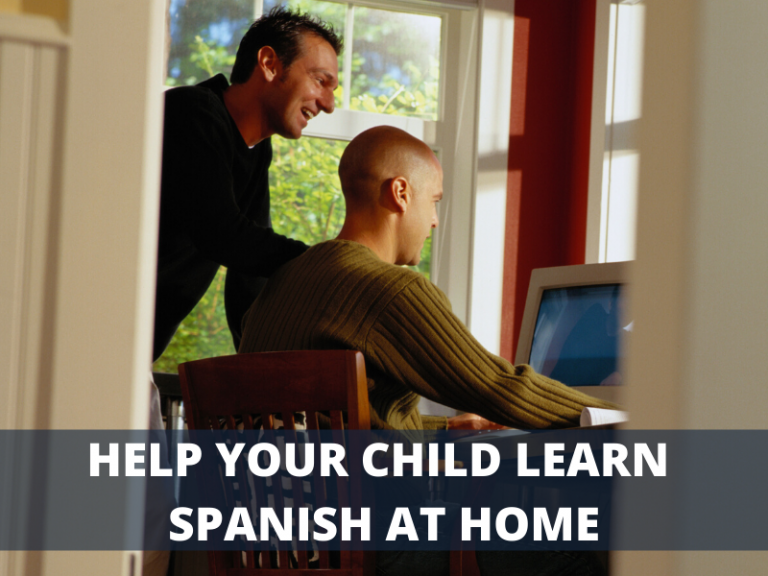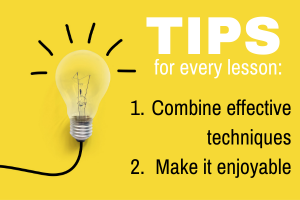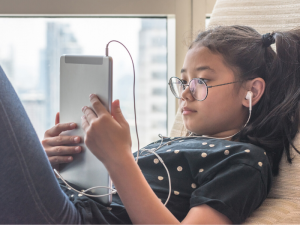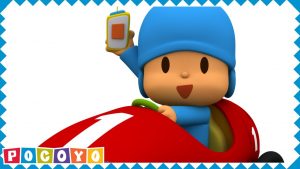How to Learn Spanish for Homeschoolers

You are probably here because you are a motivated mom or a dad who really wants to help your child learn Spanish. The good news is that you can do a LOT to help your children learn Spanish, even if you don’t know any Spanish yourself.
But, before you can help your children get started, you need to understand a little bit about what is happening in your brain when you learn a language.
What Happens in Your Brain When You Learn a Language
Language learning is the systematic rewiring of someone’s brain to be able to understand and, subsequently, speak the sounds of a new language. [1]
It’s the process of physically growing, and rewiring, neurons in your brain to first understand the sounds of a new language and then be able to reproduce them.
Language Learning is Like Learning a Musical Instrument
It’s also worthwhile to compare language learning to learning to play a musical instrument. It’s the same process: rewiring your brain to hear the details of the music that you want to produce and then training the neural pathways so that your body and your instrument can produce the sounds that make music. While not everyone can play an instrument, language learning is a bit unlike music in that essentially everyone can master a new language. They just have to consistently apply methods that are proven to work.
Language Learning is Like Stroke Rehab
What really is going on in your brain when you learn a new language is quite similar to what happens in the brain of a person who has had a stroke as they undergo effective rehabilitation to restore their lost function. [2]
So, right away, you can understand that it will take the right kind of sustained effort over time and it will take big blocks of time. You won’t get very far in learning a new language with only five minutes per day.
Key to all Successful Methods – Comprehensible Input.
All successful methods, with no exceptions, provide the student with lots of time to actively listen to a new language while understanding it. [3] There are many different ways of providing comprehensible input.
My favorite method, and the one we use at Language101.com, is to give the students two translations of short phrases that are recorded with both slow and normal speed audio.
One of our translations is a word-by-word translation of the foreign phrase into English. It won’t always make sense, but it helps you learn what the words mean when used separately.
Our second translation is what the foreign phrase means translated into English. When you take these together you get a much better understanding of what the foreign phrase means than just a good translation alone.
Click on the flag for the language you want to learn to see how we do this:
Comprehensible Input Without Translation
It actually IS possible, with the right teaching techniques, to understand, first, much and, eventually, all of a new language without translation at all. This suggestion sounds utterly ridiculous and impossible, until you see a skilled teacher do it.
Watch the video below for a very good example of how this can work. You probably won’t understand the first 20 seconds unless you already know this language (it’s not Spanish). Then, there is a short English section. She then switches back to the new language and you WILL understand at least 90% of it, even if you don’t now know any of this language.
Listen to it now and then keep reading below.
Use the Methods that Polyglots Use
Polyglots are people who can speak several languages. When you are trying to find the right methods for your child to use to learn Spanish, you must use methods that MANY polyglots like. Polyglots are a diverse bunch of people and there is a wide range of methods that they use, but you definitely should choose a method, or perhaps several methods, that are proven to work by many polyglots.
You are very unlikely to invent a new method on your own that actually works. It’s actually very easy to invent a new method that doesn’t work, which is what my brother did when he was trying to teach his daughters Spanish.
Which Spanish Learning Methods Do Polyglots Like?
There is a range. To answer that question, remember that all effective language learning methods must provide a lot of comprehensible input. Also remember that, since language learning is like learning to play a new instrument or stroke rehab, you will need to plan on a lot of practice.
An excellent way to learn the basics of a new language is to use what are called spaced repetition programs. The programs present the student with questions and answers at time intervals that start small (think a few seconds) and then quickly get longer. This is a very time efficient way of rewiring your brain to understand your new language.
At Language101.com, we use a spaced repetition system as the core of our program. Click on the Spanish flag to see how we implement this:
Other well-known spaced repetition programs are Supermemo, Anki, and Memrise. Using a program like this is a great choice for many language learners because it’s such a wonderfully time-efficient way to learn and remember what you learned.
Reading While Listening
This is not for beginners, but is great for growing vocabulary. Read a book while listening to the audio book. It certainly is possible to learn to speak Spanish without knowing how to read it. I know that because that’s exactly what I did. But, since Spanish is so phonetic, reading while listening to audio books has really helped to expand my vocabulary and get a much better feel for the common ways that things are said.
Go to Amazon and buy an audio book as well as the Kindle edition. Read the book while listening. This might be a pain to keep synced up, as they weren’t designed to do this. The chapters in the audio book are often numbered differently than the chapters in the Kindle edition. But it is worth it for vocabulary growth.
Plus, the upside is that you can buy Spanish books on a wide rang of topics, so you are sure to find something that interests you.
Naturally, you will also have to buy a good Spanish to English dictionary for the Kindle.
Key Point – Interesting Content
One thing that polyglots have in common is that they all use techniques that they like. [4] Methods that work very well for some learners won’t do you a lot of good if you hate them and never use them.
Polyglots find ways to learn languages by studying material that they are interested in anyway. [5]
Essentially, every subject in the world has a lot of content written and recorded about it in Spanish. It doesn’t matter how obscure your areas of interest are, it’s very likely that there are books about it in Spanish – or movies, or TV shows, or YouTube videos.
To turn this material into effective lessons for your favorite student, you should do two things: use a mix of effective techniques and make language learning enjoyable!
The methods that you choose should be something that your children enjoy and they have to be methods that many polyglots use. If you end up inventing a new method, it likely won’t work.
Don’t Invent a New Method
It’s very easy to invent a new method for learning Spanish, but it’s very difficult to invent a new method that actually works. My brother speaks excellent Spanish and uses it every day in his work as a physical therapist. He decided to teach his daughters Spanish by telling them stories and plugging in an occasional word in Spanish into the English story. The result was that the girls can only speak a few words of Spanish.
Your Methods Determine the Time Required
Language learning methods vary from methods that are both fast and effective to methods that can be effective if you use them long enough (we will call those slow and effective). There are also methods that really can never work, even if you apply them diligently.
Spaced repetition programs used to memorize short phrases, like Language101.com, are both fast and effective. Pimsleur is a slower, but also effective, way to learn a language since it’s technology is basically the digital version of a cassette tape. I like it and it will work, but it is slower.
Buying a Spanish textbook and studying it diligently from cover to cover is also a slow and effective way to learn. Of course, you will need to find a textbook that comes with some kind of audio.
Programs that present video with good translations and fast lookups, like Yabla, are good for getting the overall sense of the language.
Methods that never can work at all include learning words in isolation from their context. I met a university professor once who knew several thousand words in English that he had memorized with a simple memorization program, but he couldn’t speak English at all.
Rosetta Stone fails to work entirely for most students because it doesn’t provide comprehensible input. You have to guess what the pictures mean, as opposed to being told what the words and phrases mean.
Plan on using several methods on your journey to your desired level of proficiency in Spanish. For a trip to Madrid, it’s like the taxi, the subway, the moving floor, the escalator, the airplane, and the same thing in reverse as you go to your hotel on the other end.
An effective mix would be a good spaced repetition program, like Language101.com, plus audio books with reading. You should also account for the need to look up words you don’t know plus time with a tutor for practice and correction.
There aren’t any study tools that are perfect for everyone, but it should be fairly easy to find tools that you and your children will like and make very good use of.
Set Realistic Expectations
How many times should you expect to learn and then forget a word in your new language? A lot of beginning language learners think that things should stick after one or two times. Experienced language learners expect to look up words they have learned then forgotten tens to hundreds of times. [6]
Using a good spaced repetition program like Language101.com will certainly help with this, but remember how I said learning a language is a lot like learning to play a new instrument or stroke rehab? This takes time, so plan a reasonable schedule. Tell your children that forgetting many times is normal and part of the game.
Plan an Adequate Schedule
Language learning is not something that ever goes really fast. Duolingo’s lies about learning a language in only 5 minutes a day are terribly misleading to the marketplace. While you can certainly learn something with Duolingo, their success stories come from the people who loved Duolingo and spent about 4 hours per day working on it.
When I was first starting to learn Spanish, I met a Spanish teacher who told me to spend four hours per day learning Spanish for a year and I would be very happy with the results. Of course, I didn’t listen, but now I certainly wish that I had and I think that is a fairly realistic estimate of the time required to develop the level of fluency most people want.
If I was setting up a program for my children to learn Spanish, I would try to set up a program where they could spend four hours per day for a year. If the children were old enough to use a spaced repetition program, I would have them do that for an hour per day, two hours of Spanish TV with a program like Yabla, and one hour per day with a tutor, talking about whatever they are interested in in Spanish.
Spanish Day Care and Spanish Nannies
Spanish speaking child care is available in every major city in the United States and almost all of the minor cities. This can be an effective method. This also won’t cost you any more than English-only speaking day care and nannies.
Try to find a nanny who has the personality of a teacher and speaks with an educated accent. An educated Mexico City accent is a good choice.
Spanish Cartoons for Small Children
There is a great lack of effective Spanish learning programs for small children, although there are a lot of programs that claim they will be effective. Most Spanish programs that are aimed at small children are sold because there is essentially no way to prove they don’t work. If your small child doesn’t learn Spanish then you must not have used the program correctly, right? Wrong In reality, many of these programs wouldn’t work even if you used them perfectly.
I’m not a big fan of having children spend a lot of time watching TV, but if you are going to let your children spend several hours per day watching TV anyway, make them switch to watching Spanish language TV either from broadcast TV, Netflix, or YouTube.
How effective this is depends a lot on your children and whether or not you get to the minimum effective dose for them. This is not very efficient in terms of words learned per hour spent, but, if they spend enough time watching enough shows (and preferably watching the same ones over and over again), this can be an effective method.
There are educational cartoons aimed at two-year-olds and, if your children spend enough time watching them (and it needs to be a lot), they will learn either some or a lot of Spanish.
Learning Spanish as a Family
I get lots of questions about how to learn Spanish as a family. I also get requests for how one family member can learn French while the others want to learn Spanish. Our super pack is good for this.
Usually, these are families with children of different ages with a very motivated mom or dad. What I would suggest is a combination of several study tools for individual study and then switching your entertainment and socialization activities to Spanish.
Start with a core spaced repetition tool that most member of the family can use, like Language101.com. Add a more entertainment-oriented study tool like Yabla. Then, switch all family TV watching to Spanish and switch your socializing to Spanish.
If you are religious, switch to a Spanish church. If you aren’t religious, find a social club on an area of your interest and go to that in Spanish.
What About Language Immersion?
Travel is not essential. You don’t need to go there. Now, there’s nothing wrong with a great vacation to Cancun, but you may be surprised to find that essentially all of the people who live in Cancun speak very good English.
Don’t expect travel to automatically be a good language-learning experience. A well-designed, stay-at-home and study session will help you learn a lot more than a vacation to Mexico, where you just do typical tourist things in English.
Learn Spanish Through Your Culture, Your Interests, Your Religion
Religious, Cultural, whatever you want. Custom lessons available:
Test Before You Buy
Homeschool families are faced with the difficult problem of choosing Spanish study materials for their children when neither mom nor dad knows Spanish. In many areas of life, picking the market leader or the company with the best advertising is a good approach. But not with language learning.
When your son or daughter is ready to learn Spanish, the important thing is not whether the website is gorgeous or who likes the program. The important thing is how much can your child remember after studying for 30 minutes.
Fortunately, this is easy to test. Have your son or daughter do the Rosetta Stone demo for 30 minutes and then have them do our demo by clicking on the flag below for 30 minutes. Then, buy the program where they can remember more at the end of a 30-minute lesson.
For homeschoolers, it’s especially important to have an easy way for mom or dad to monitor their child’s progress without having to know the language. The Language101.com program has a mom, dad, or teacher interface that makes this easy.
References:
1. Penn State. (2016, February 13). “Language juggling rewires bilingual brain in a good way.” Retrieved April 19, 2020 from https://www.sciencedaily.com/releases/2016/02/160213185925.htm
2. Kiran, Swathi. (2012, December 23). “What is the Nature of Poststroke Language Recovery and Restoration?” ISRN Neurology. Retrieved April 19, 2020 from https://www.ncbi.nlm.nih.gov/pmc/articles/PMC3540797/
3. Krashen, Stephen. (2005, March 28). “Theory of Second Language Acquisition”. Retrieved April 19, 2020 from https://www.sciencedirect.com/science/article/abs/pii/S0346251X98000025
<!–4. The Summer Language Academy. “24 Polyglot Experts Reveal 2 Most Useful Tips to Learn a New Language.” Retrieved April 19, 2020 from https://www.summerlanguageacademy.com/blog/language-learning–>
4. Ibid.
5. Sarigul, Ece. “The Importance of Using Dictionary in Language Learning and Teaching.” Retrieved April 19, 2020 from http://dergipark.org.tr/en/download/article-file/151836

 Login
Login



